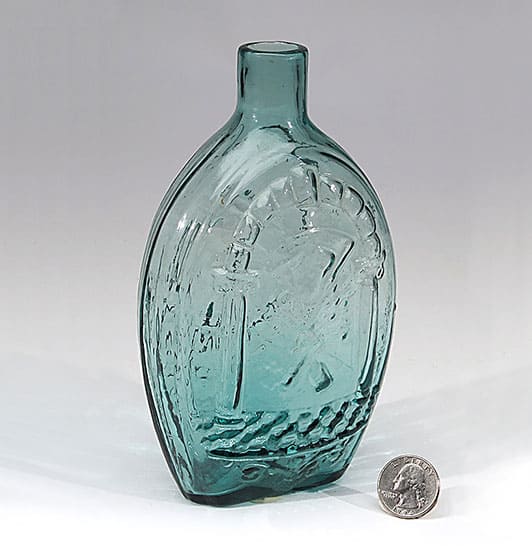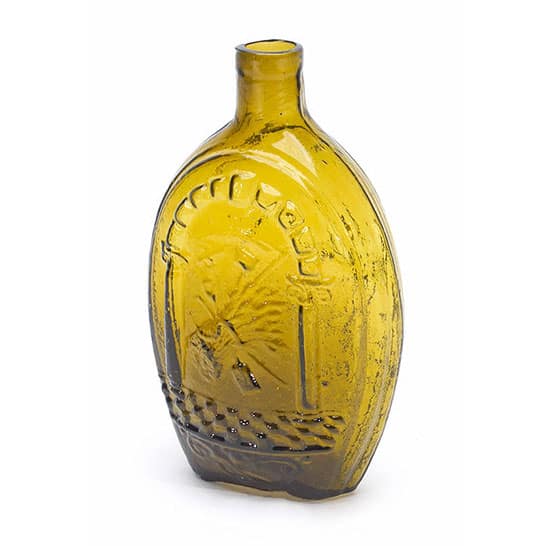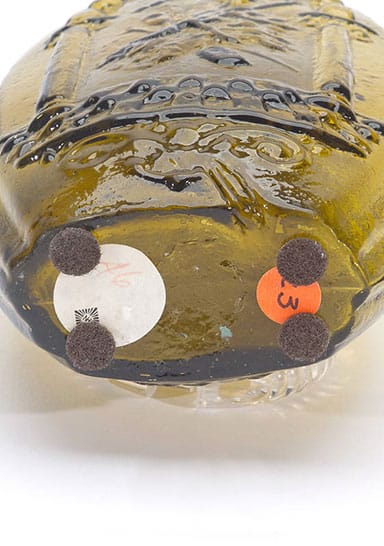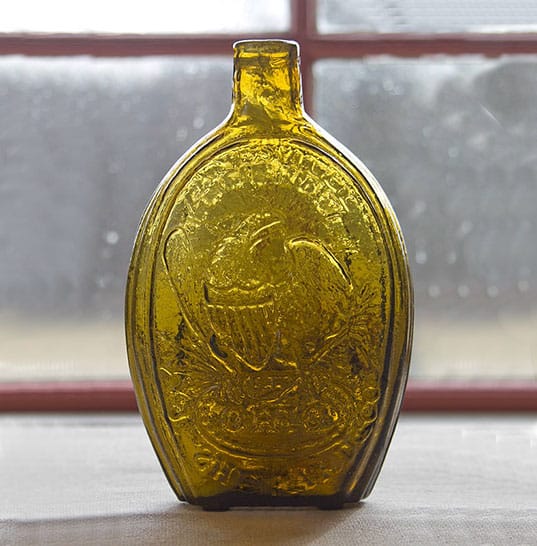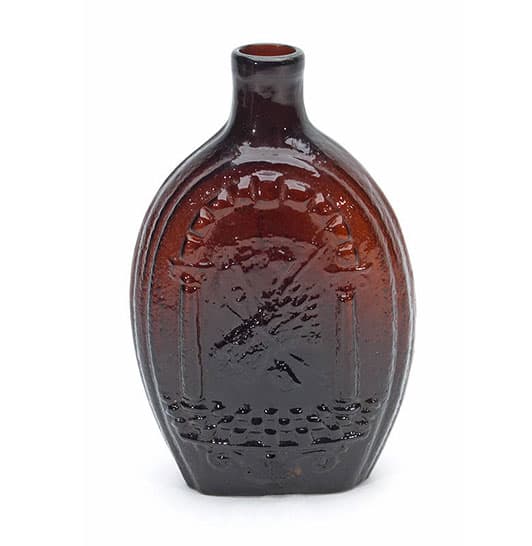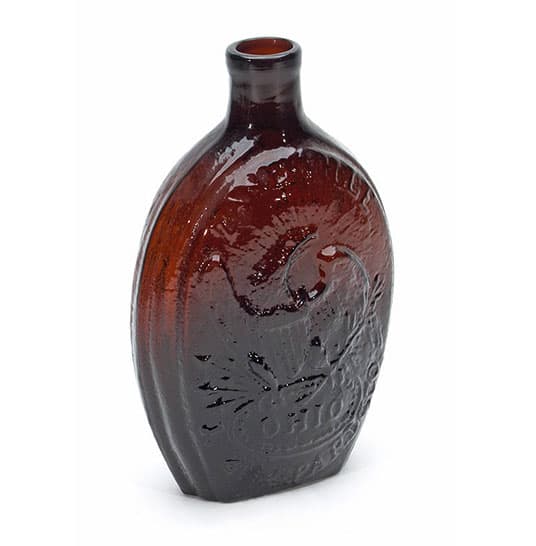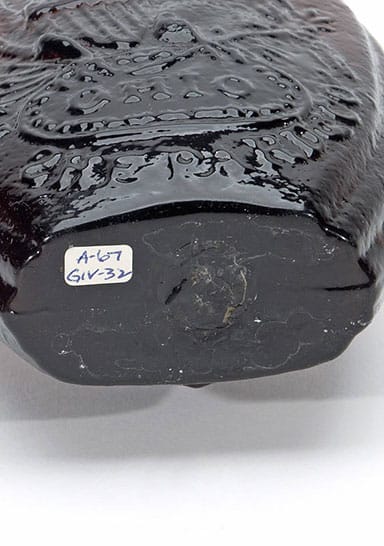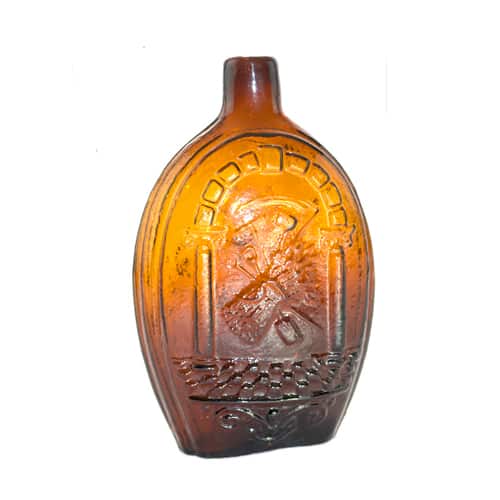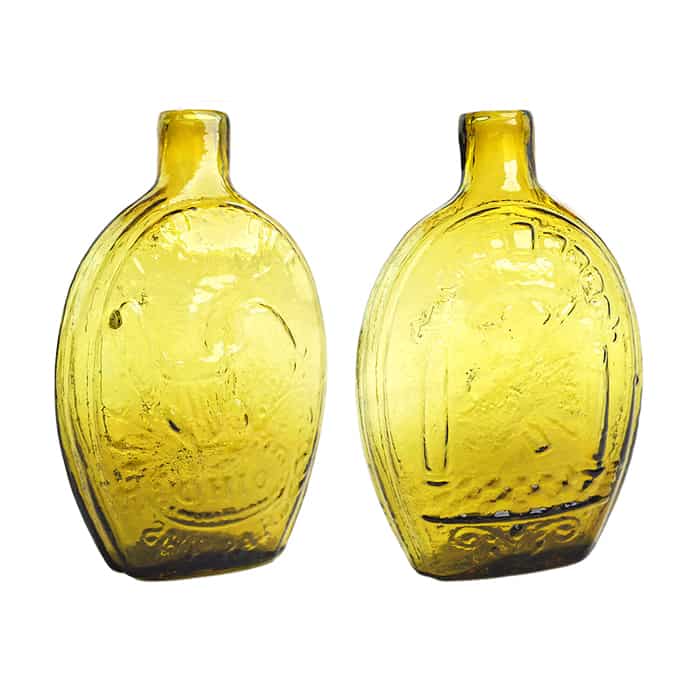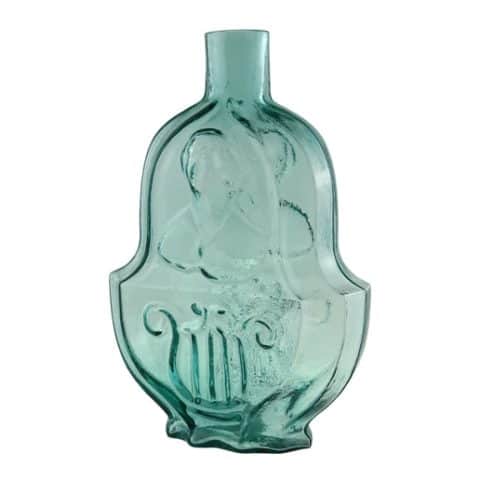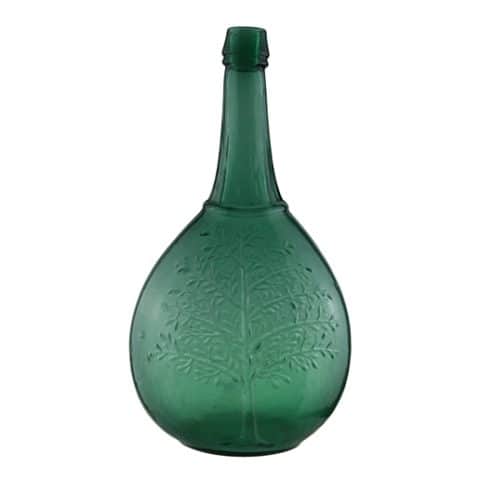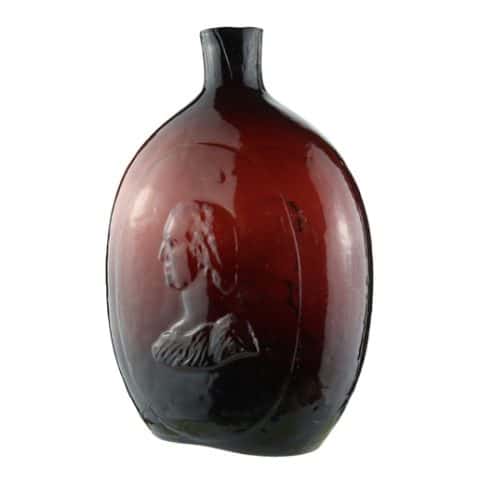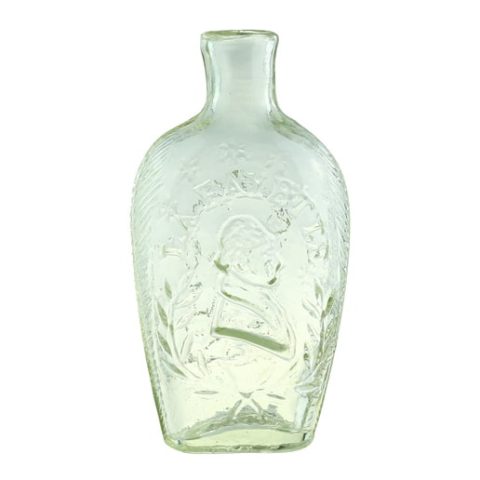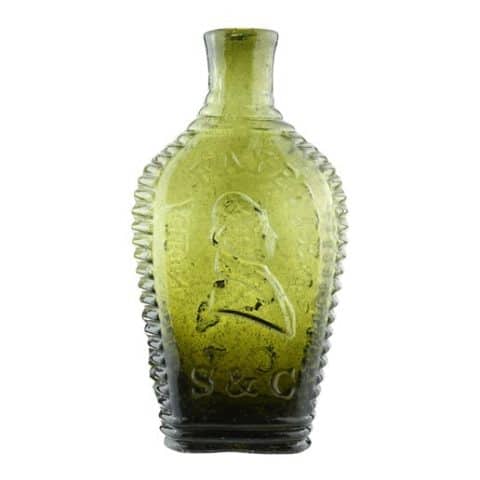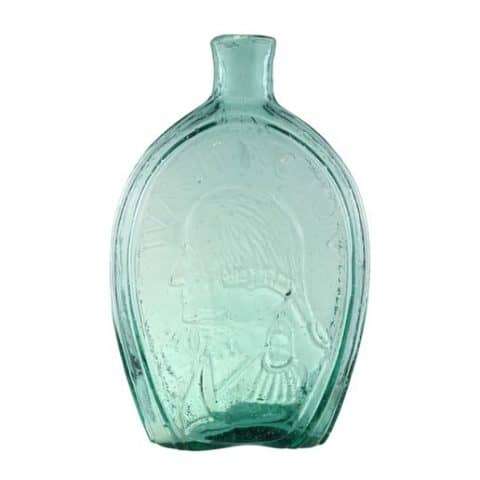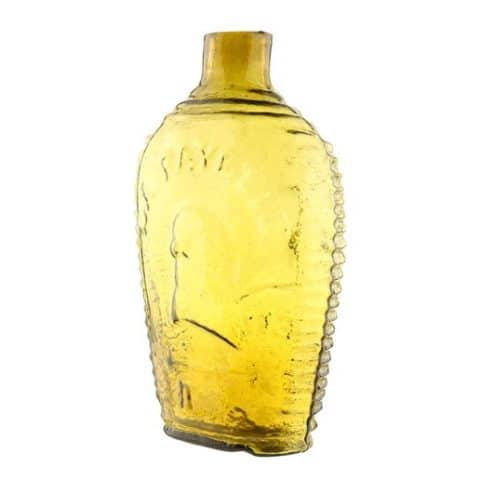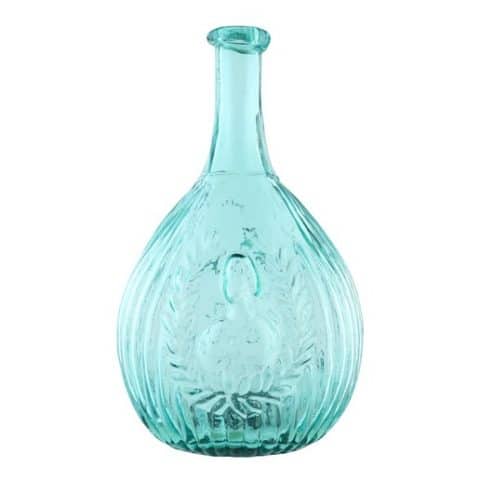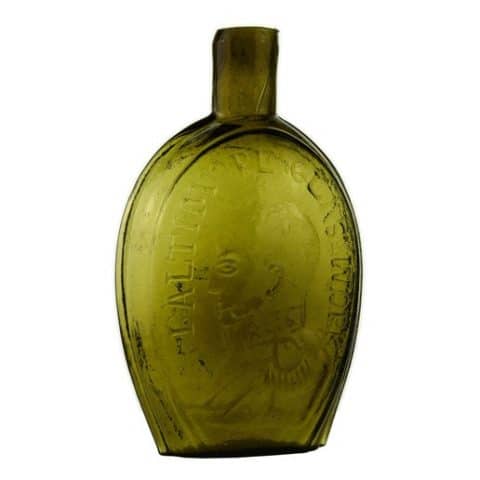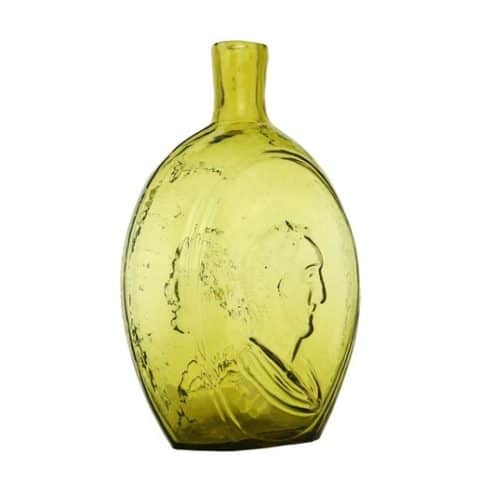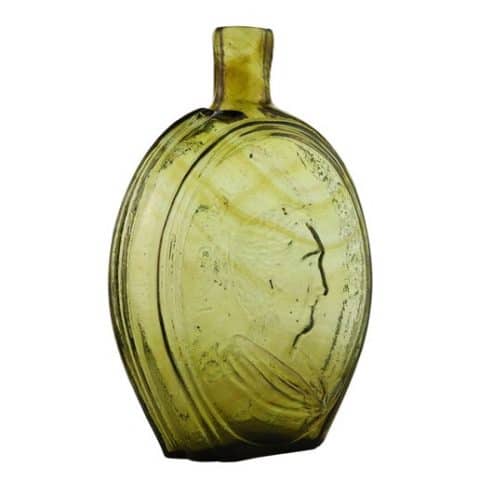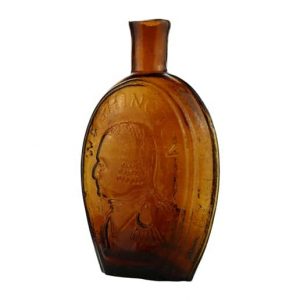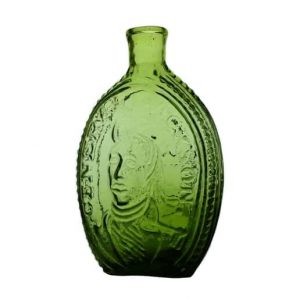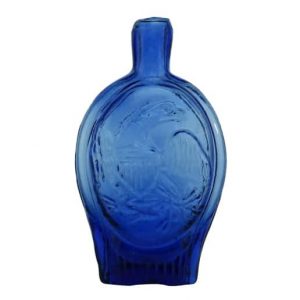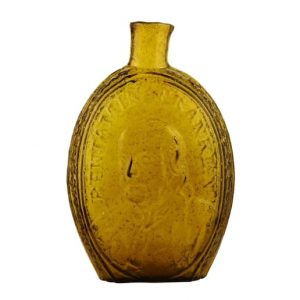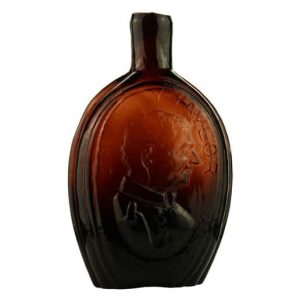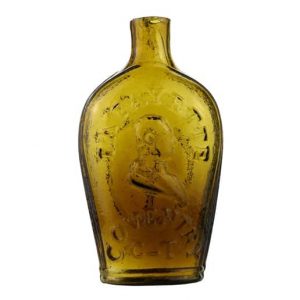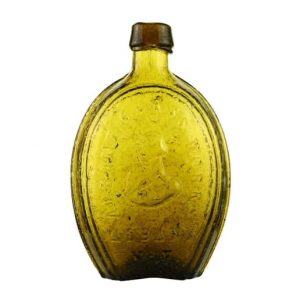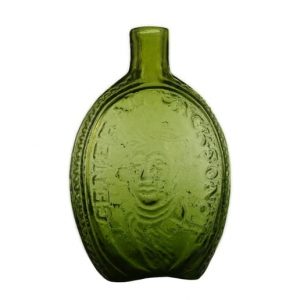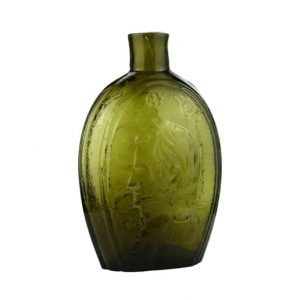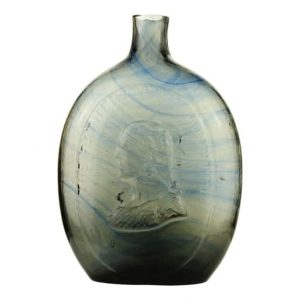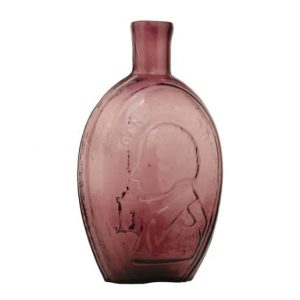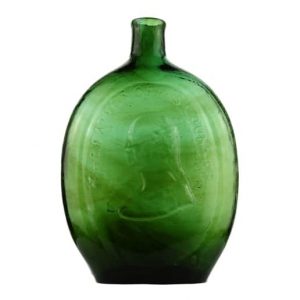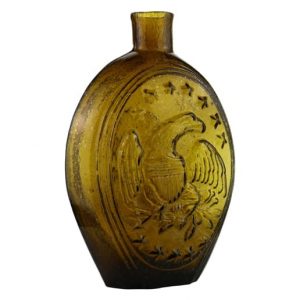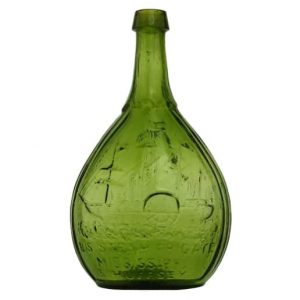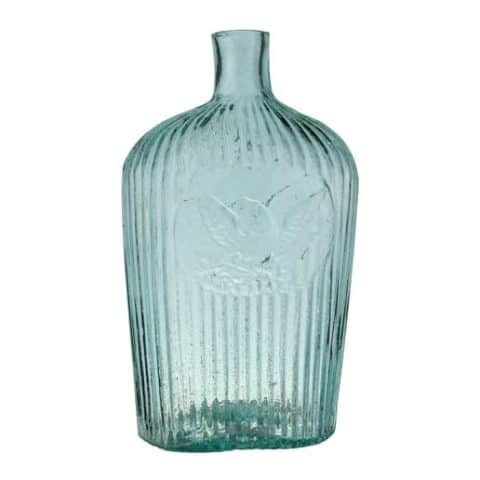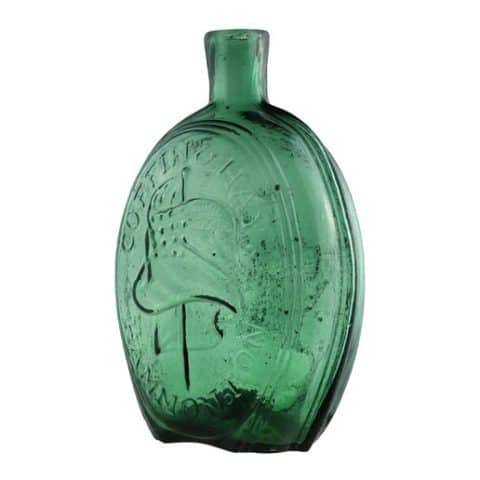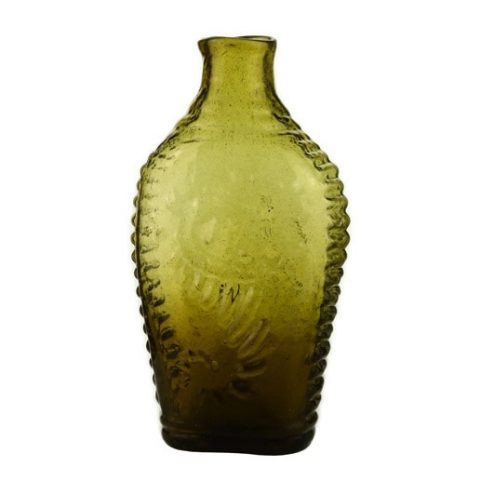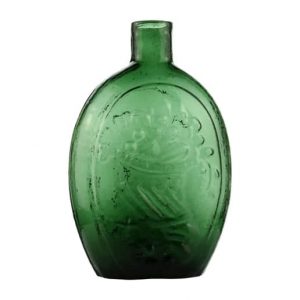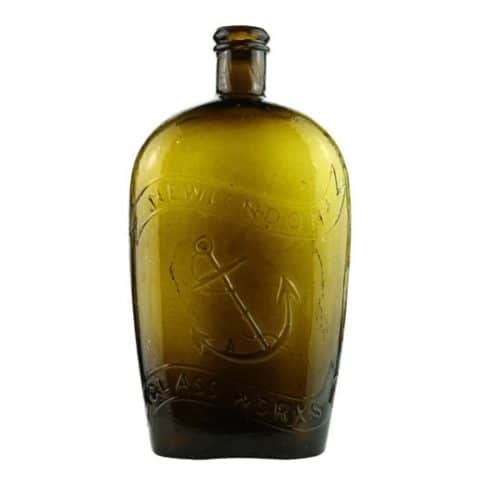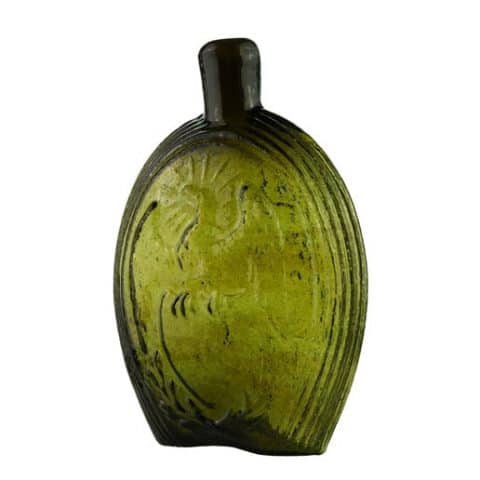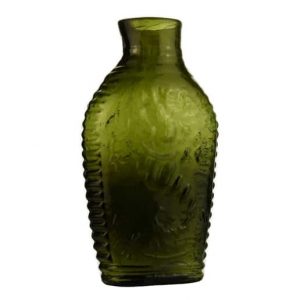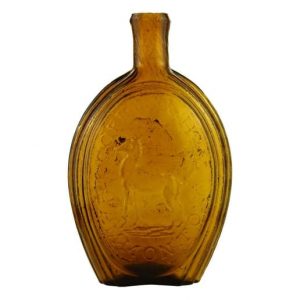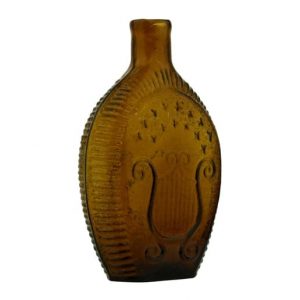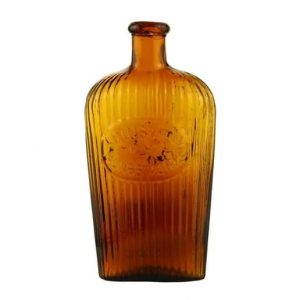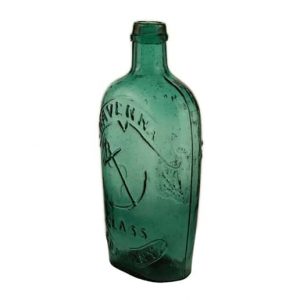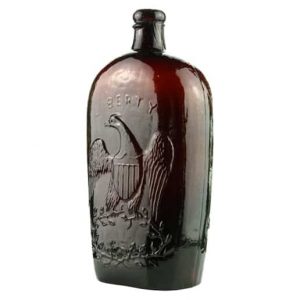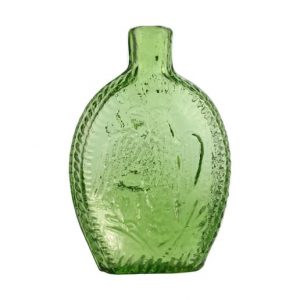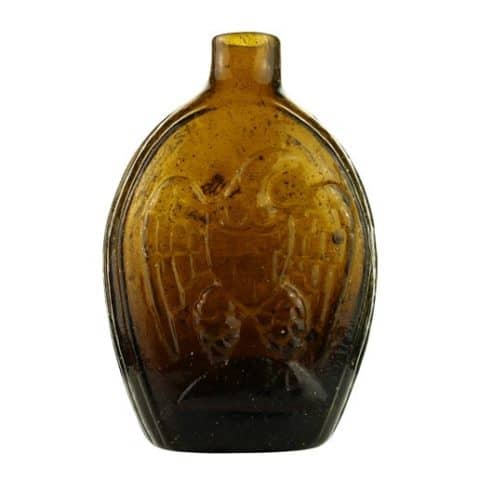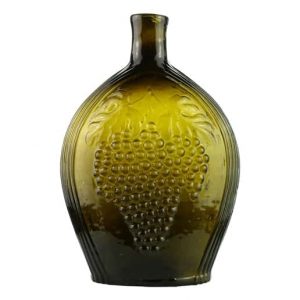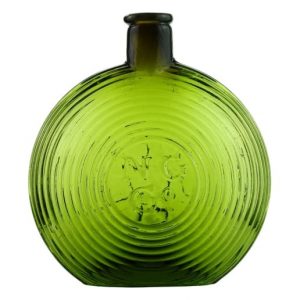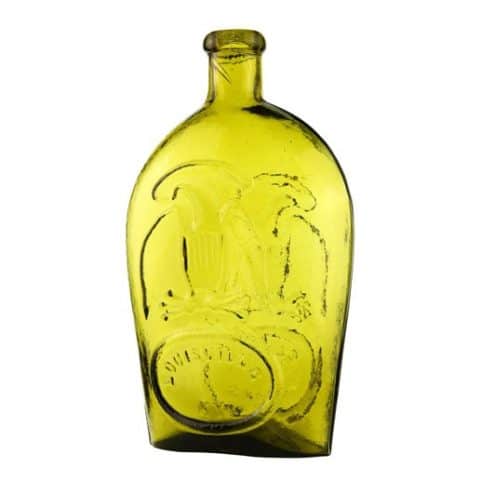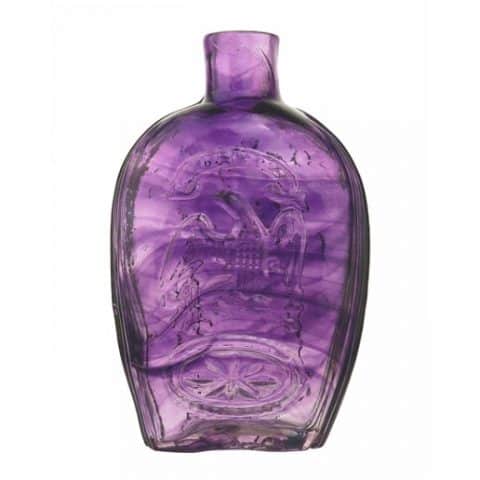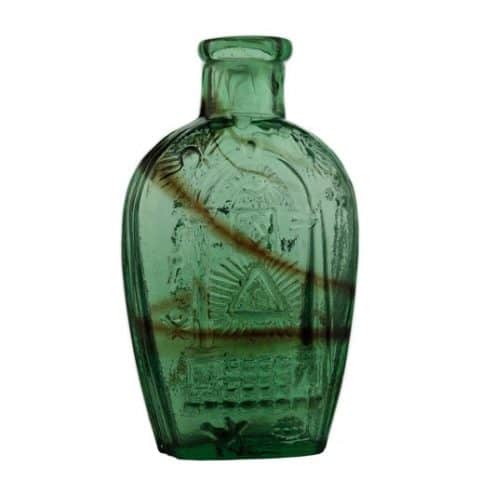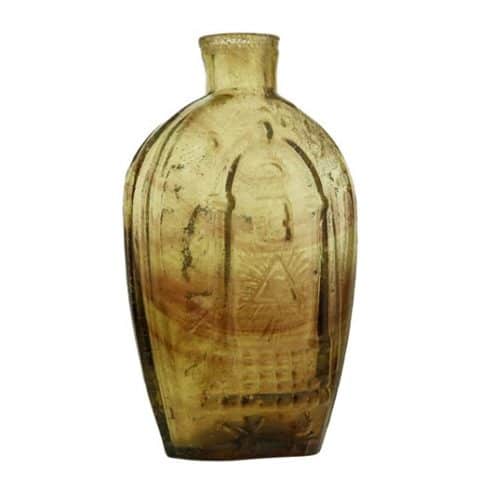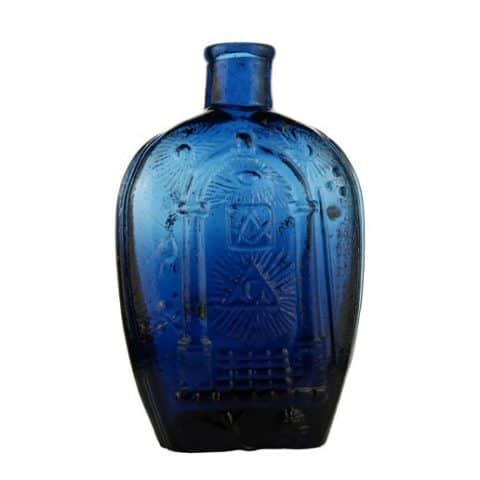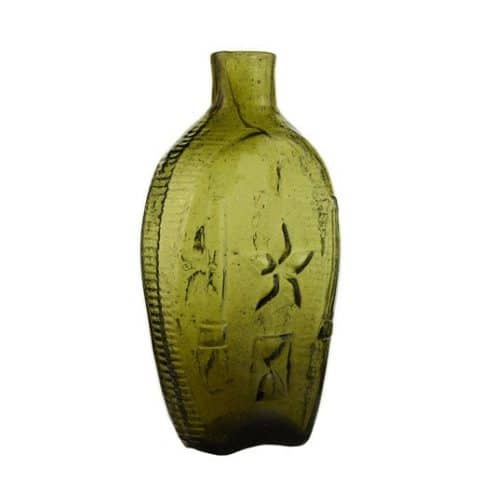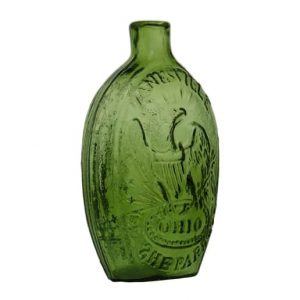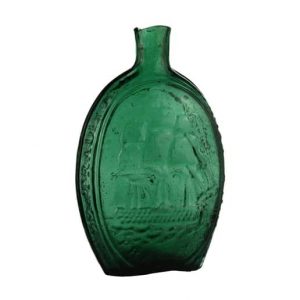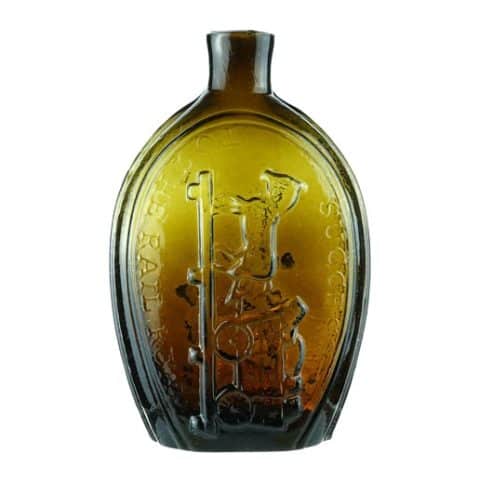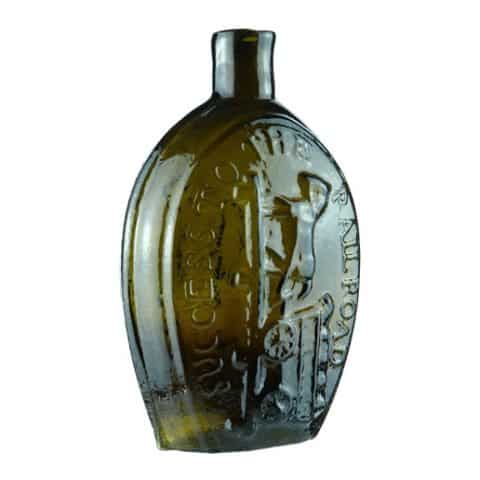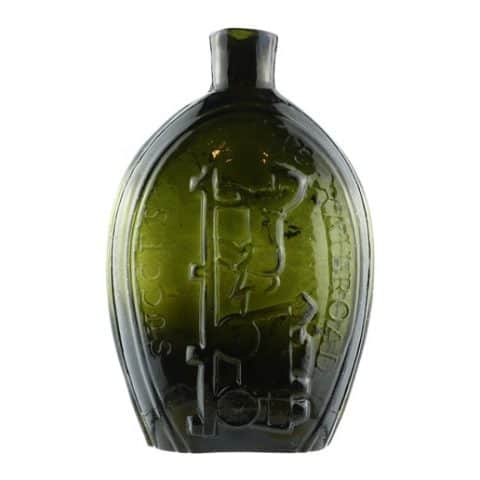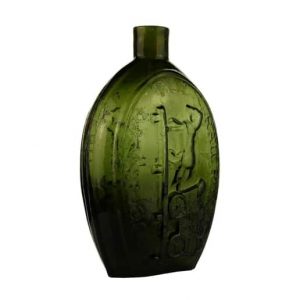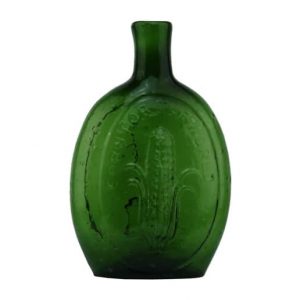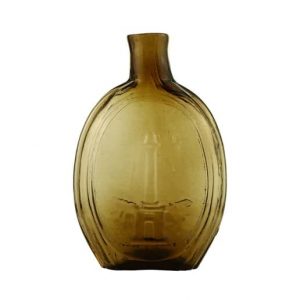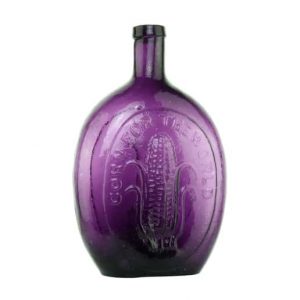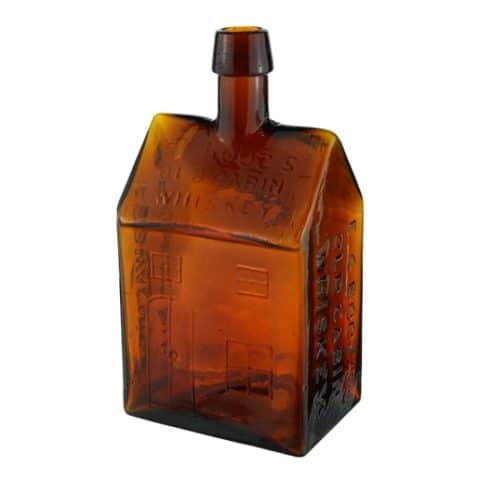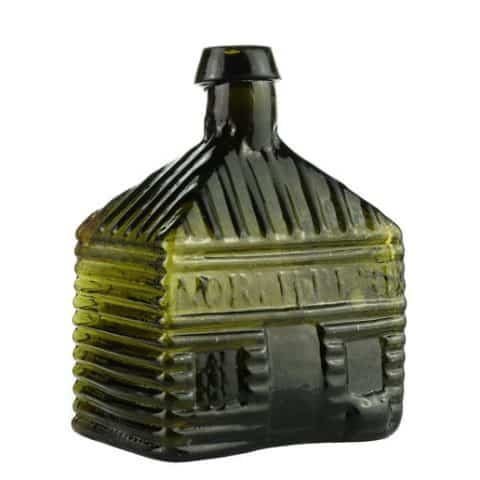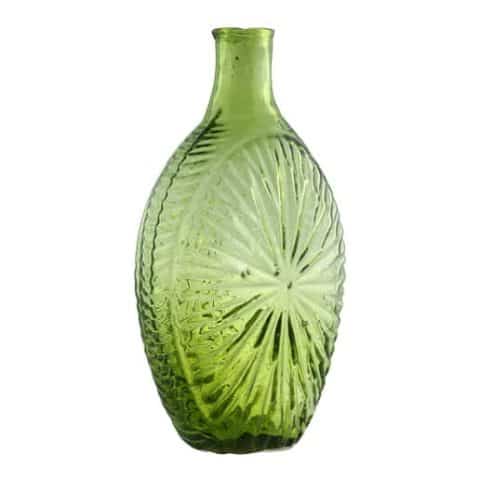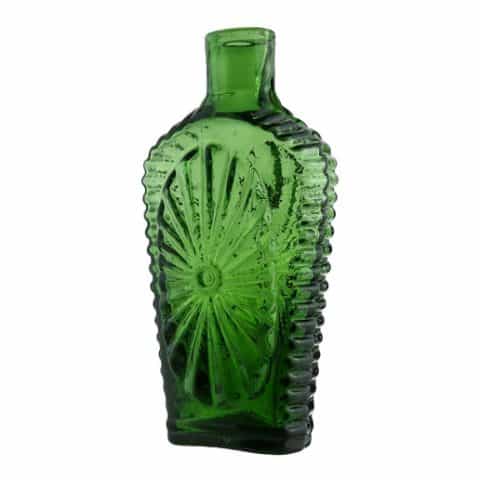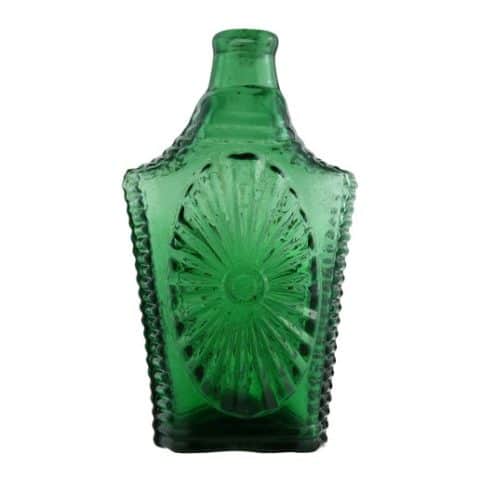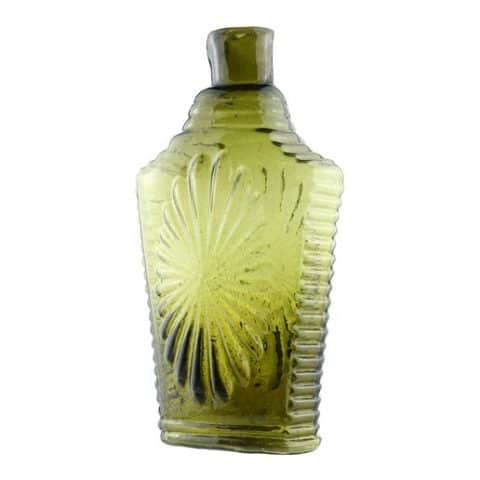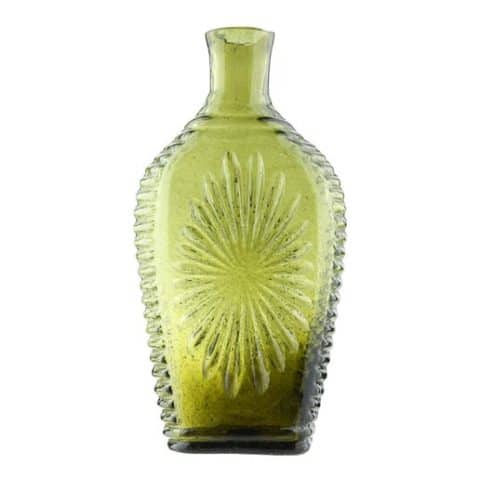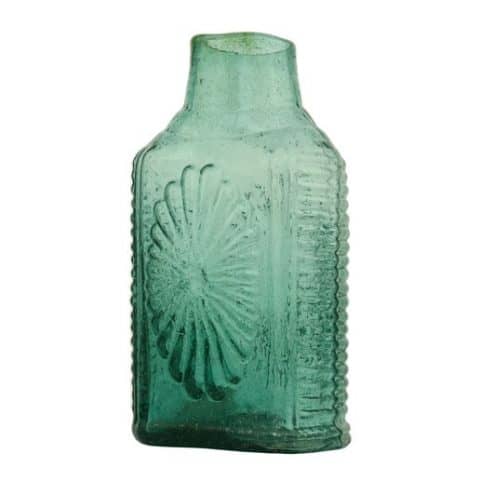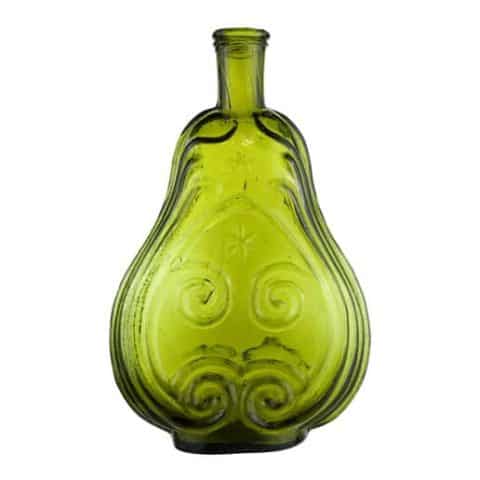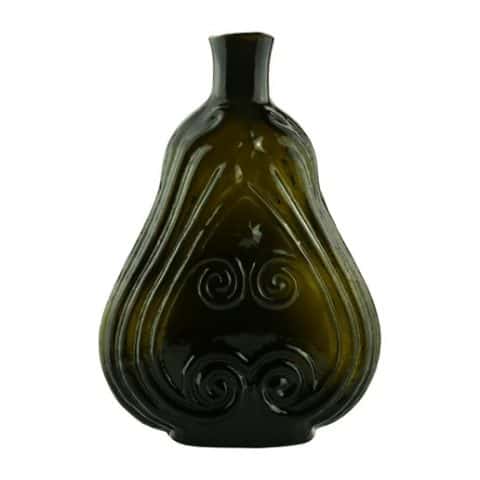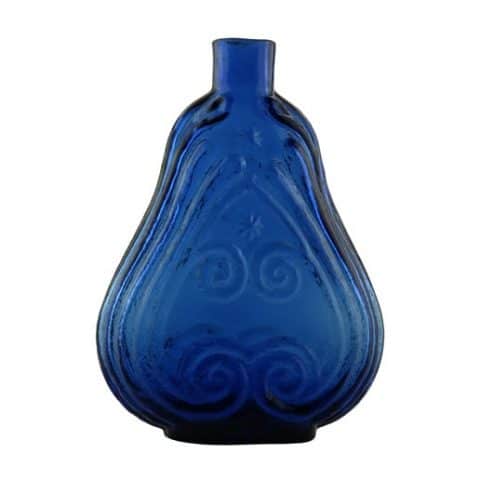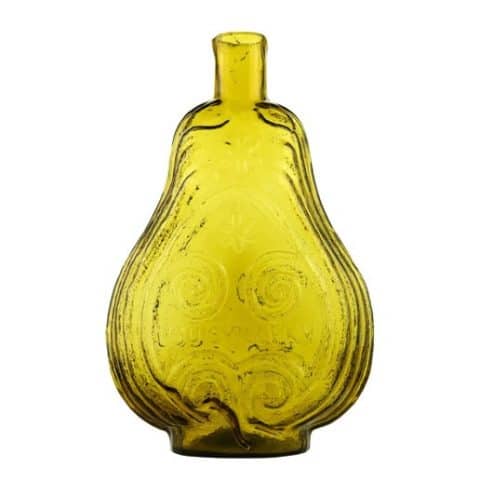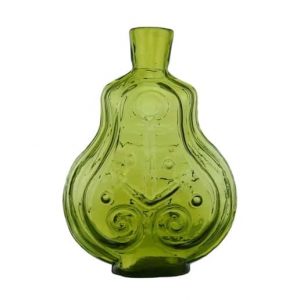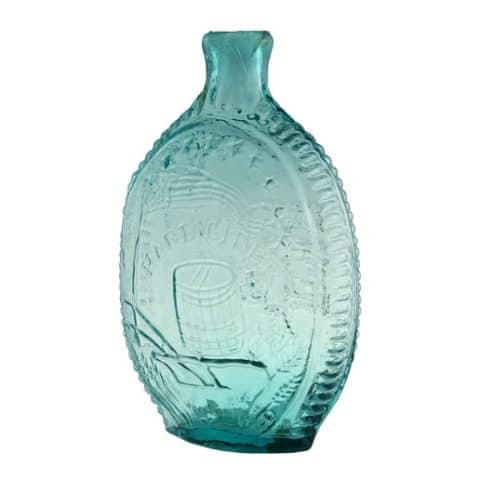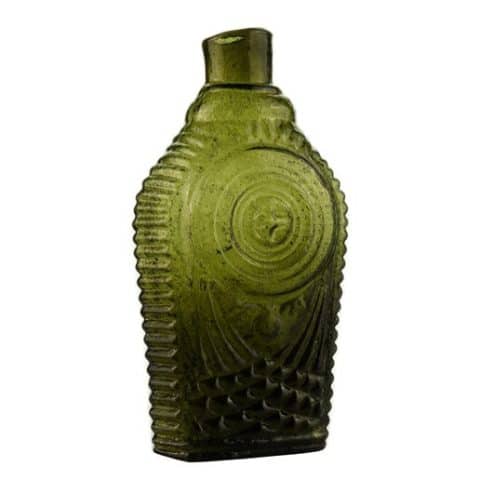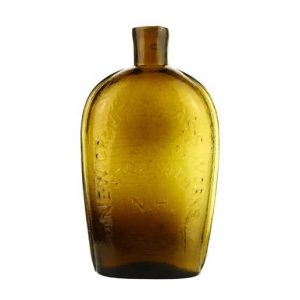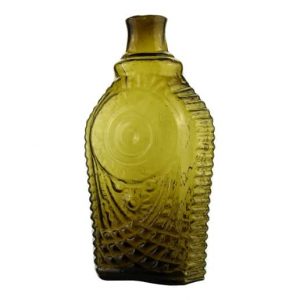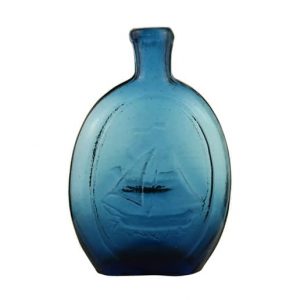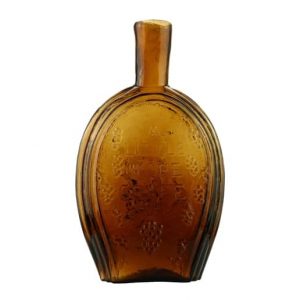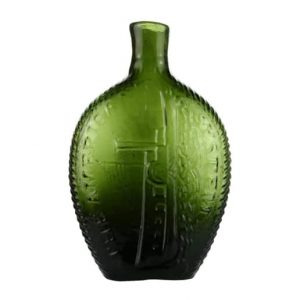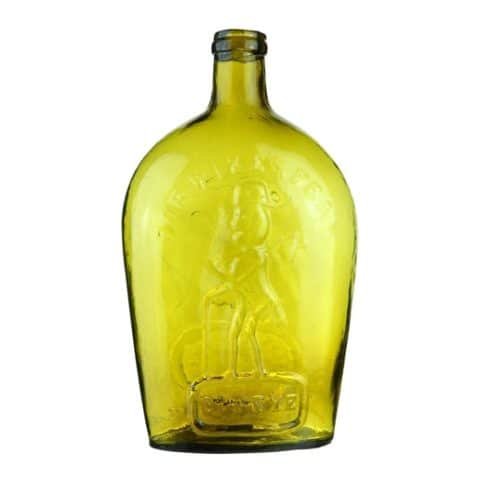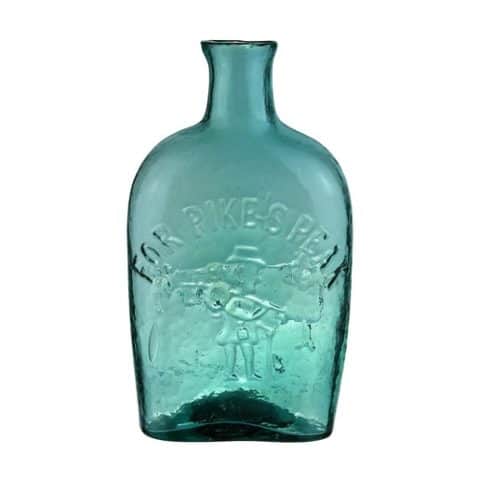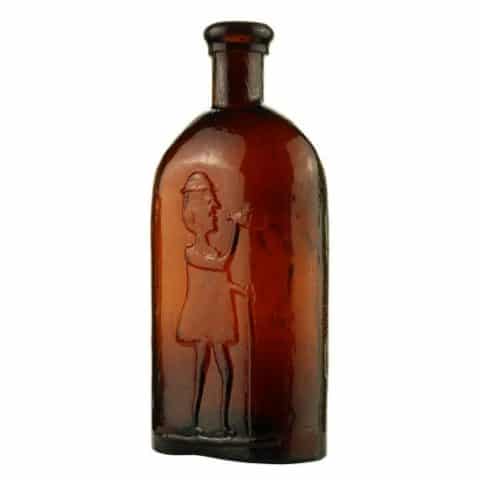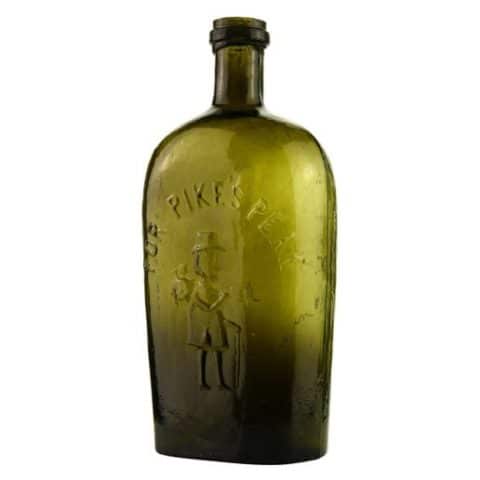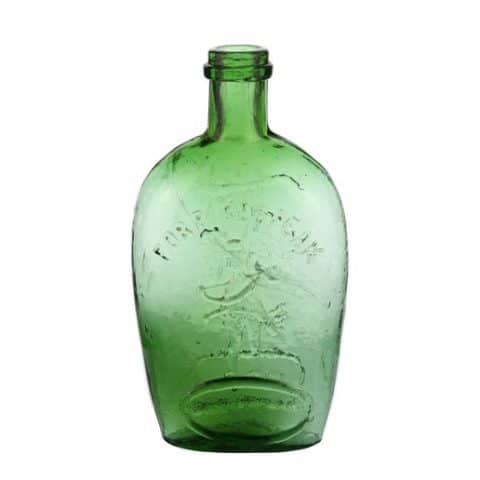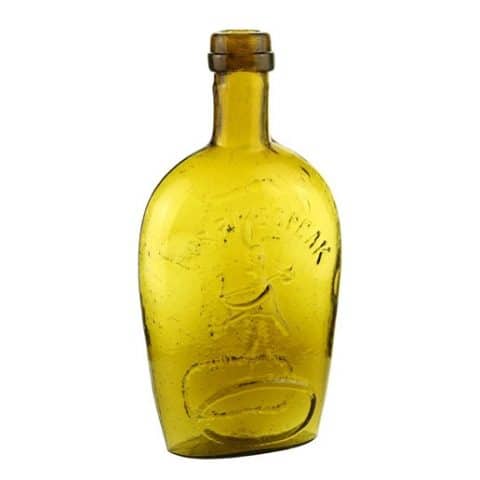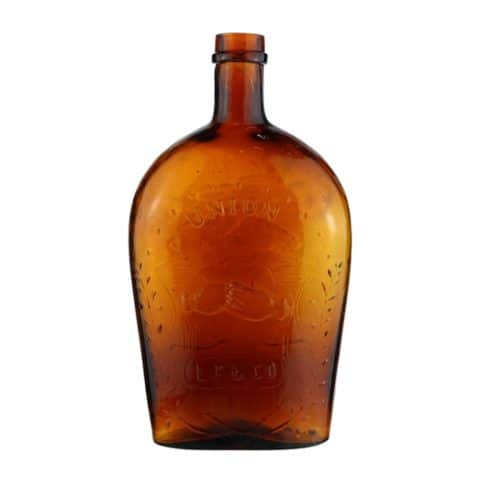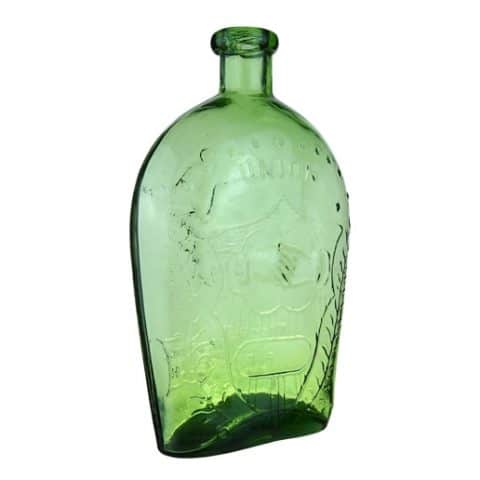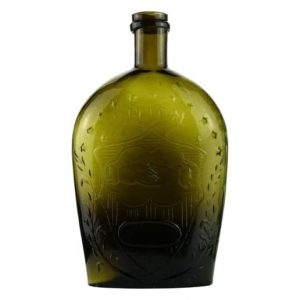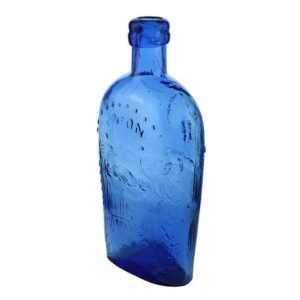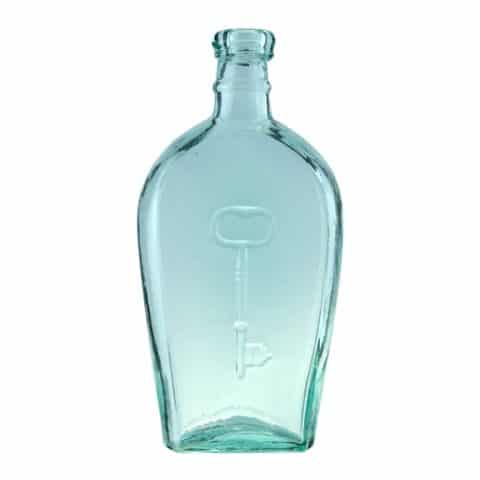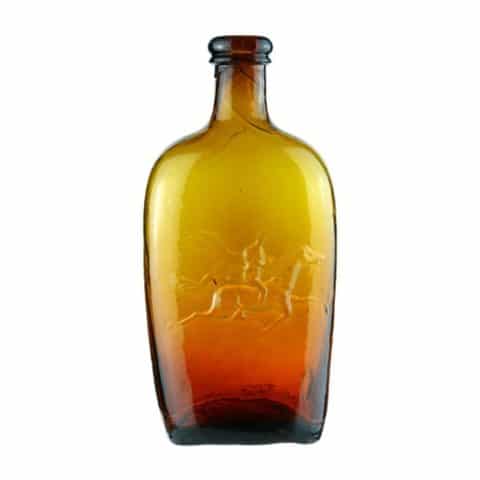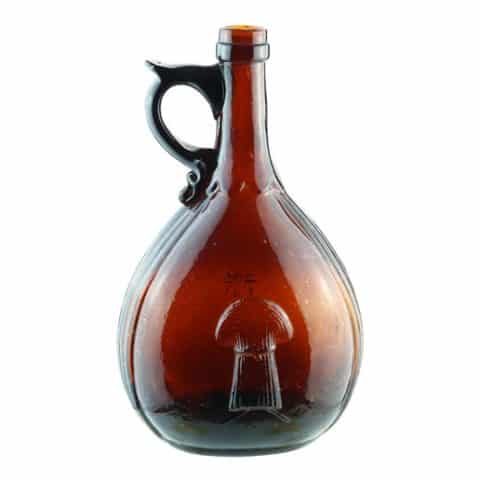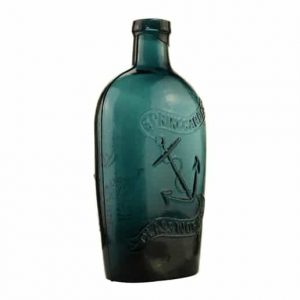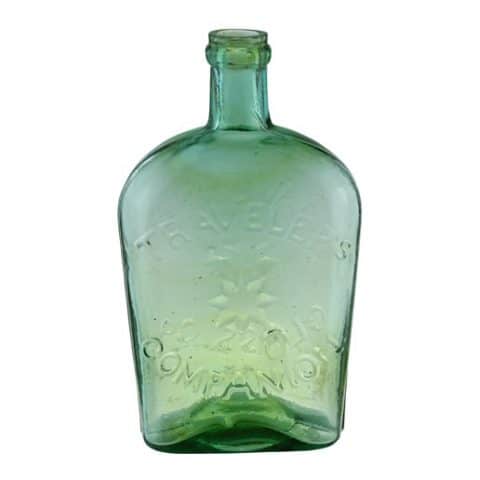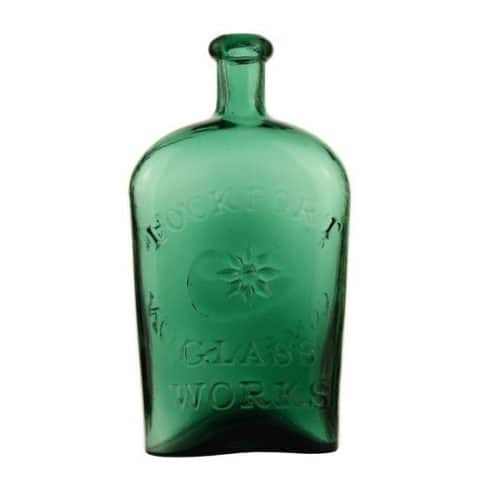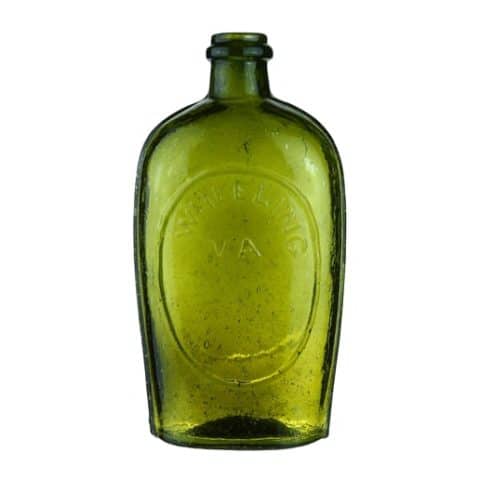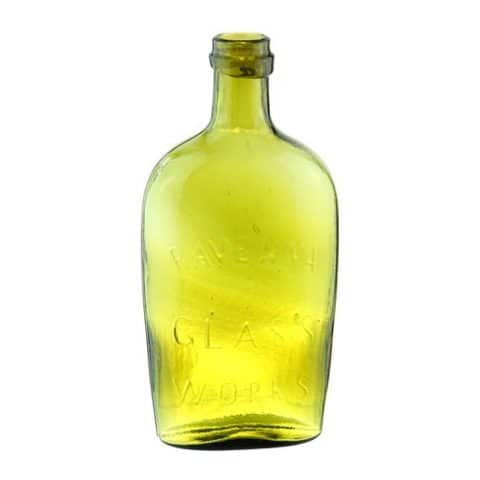GIV-32 Masonic Arch – Eagle Shepard Flask
GIV – 32
Masonic Arch and Emblems – Eagle
“Zanesville Ohio – J. Shepard & Co.”
“SHEPARD FLASK”
White Glass Works, Zanesville, Ohio
Medium Green Pint
Provenance: Sandor P. Fuss Collection
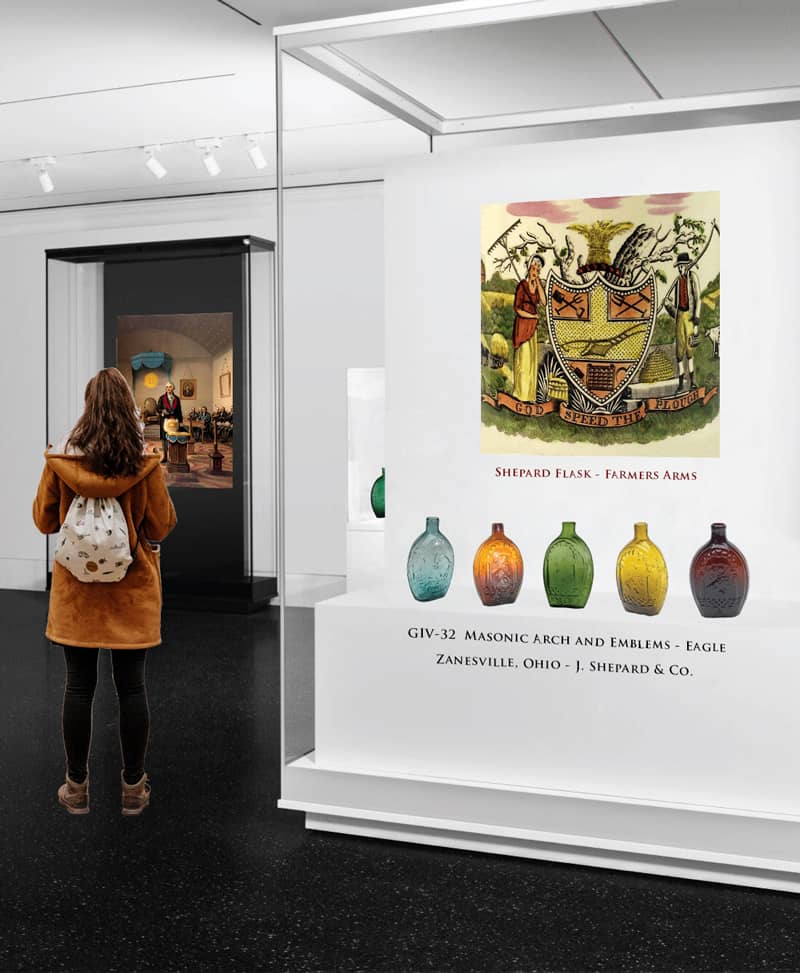
Our pint flask is commonly known as the “Shepard Flask” and was made in Zanesville, Ohio between 1820 and 1830 at White Glass Works under the proprietorship of J. Shepard and Co.
This example is a rather common mold that was blown in an extremely rare yellow-green glass color. The GIV-32 flasks can be found in a wide range of glass colors but the yellow-green example represents the finest color available among the many. An interesting anomaly of this flask is the amber and orange amber examples are probably the most common colors found in this mold followed by the bluish aquamarine examples. The flask has an abundance of design and emblems on both sides and even displays a little folk art characteristic by having the “S” in Shepard reversed.
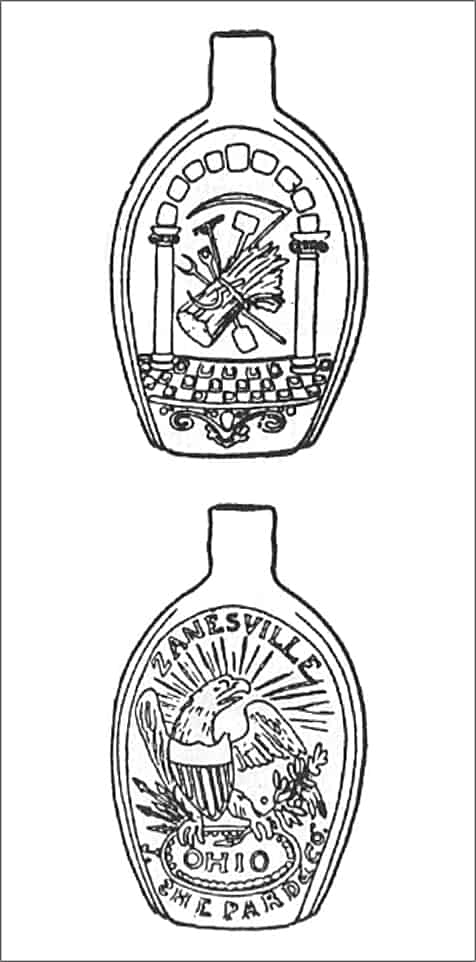
The GIV-32 flask is desirable to many as it includes the American eagle, emblems of Freemasonry, and farming tools. The obverse side of the flask features the Masonic pillars and arch with pavement consisting of twenty-two spaced bricks. Inside of the Masonic frame is the “Farmers Arms motif.” These are tools to make the farmer’s work easier including a pitchfork, shovel, rake, sickle, ax, and scythe. A sheaf of wheat is also prominently positioned and leaning to the right. Below the bricks is an embossed ornate scroll design.
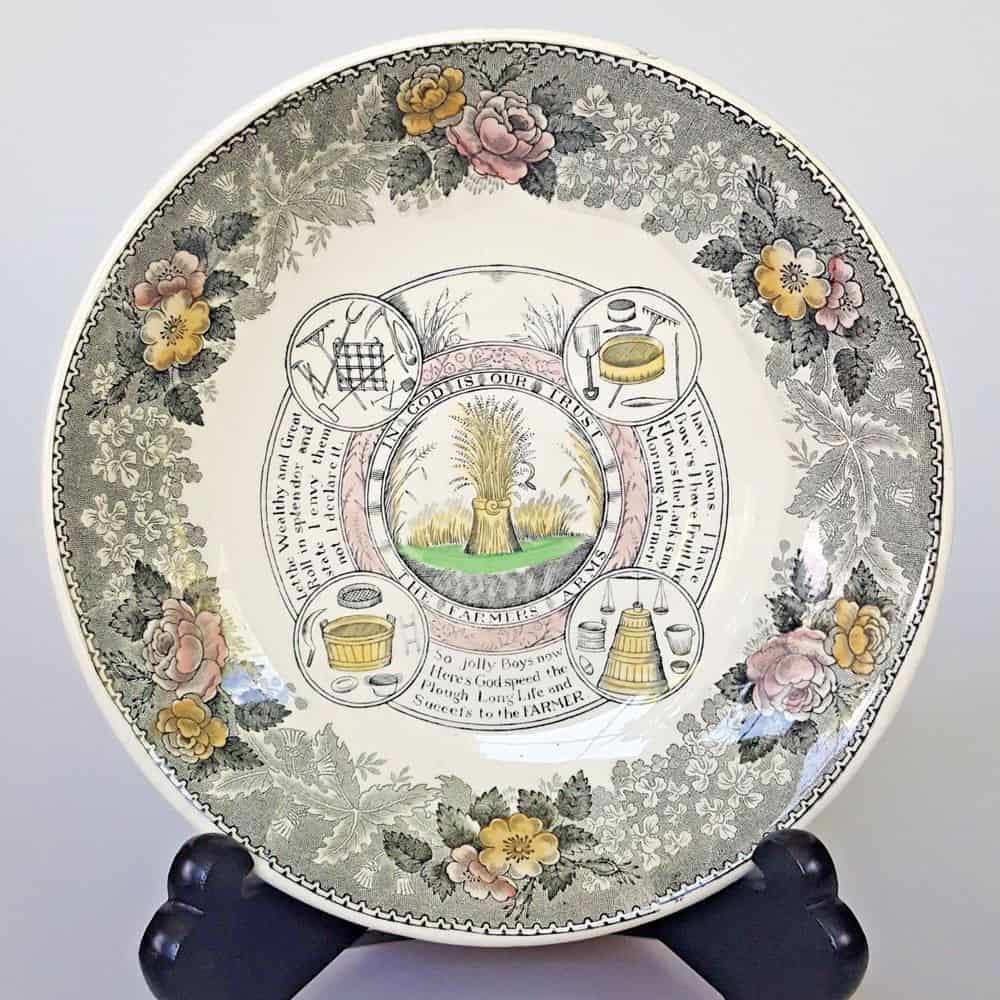
The reverse of the flask features an American eagle with its head turned to the right. Sun rays adorn the eagle’s head and five arrows or thunderbolts are in its left talon and an olive branch in the right talon. The embossed copy ‘OHIO’ is in an oval that has twenty-six small beads. ‘J. SHEPARD & CO.’ is embossed in a semicircle with the ends pointed up below the oval. ‘ZANESVILLE’ with the ends pointed down is embossed in a semicircle and is above the sun rays.
Known flask colors are aqua which is very common and light green which is considered just common. Medium green, light blue-green, teal, golden yellow, and dark brownish amber (black) are considered scarce; golden amber, dark amber, dark red amber, and medium blue are considered comparatively scarce. Emerald green, blue-green (clam broth tone), blue-green (amber slag threads), and olive-yellow are considered rare with citron and yellow-green considered very rare.
White Glass Works which Is to become the Zanesville Glass Manufacturing
According to Rhea Mansfield Knittle of Ashland, Ohio in her book, Early American Glass published in 1927; Zanesville was the first glasshouse in Ohio. It was formed by a group of eight businessmen and incorporated May 13, 1815. Those businessmen were; General Isaac Van Horn, David J. Marple, Samuel Sullivan, Samuel Herrick, Rees Cadwalleder, Dr. John Hamm, E. Buckingham, and Edmund Jones. Edmund was to serve as superintendent of the glassworks. An announcement in 1816 stated, “These works are now in complete operation, and the proprietors have on hand a large assortment of white hollow ware, specimens of which may be seen at their warehouse. Physicians and apothecaries can be furnished with ware for shop furniture. Orders shall be filled with care and despatch, and upon as reasonable tirms (sic) as can be purchased in the western country.”
These works are now in complete operation, and the proprietors have on hand a large assortment of white hollow ware, specimens of which may be seen at their warehouse. Physicians and apothecaries can be furnished with ware for shop furniture. Orders shall be filled with care and despatch, and upon as reasonable ti-rms (terms) as can be purchased in the western country.”
Source Unknown
At that time Zanesville was a town of 1,200 but was located in a rich agricultural region of the county that supported a population of 14,000. Located on the banks of the Muskingum River, the river provided a means of transporting produce and wares to large and small communities.
In the first two years of glasshouse operation, only white hollowware (cups, plates, bowls, etc.) was produced. Later a building was added and the start of production of window glass and green hollowware in 1817. There were a few changes in operation and ownership from 1817 to 1822 when the Reverend Joseph Shepard formed J. Shepard & Company and acquired the company. The company under J. Shepard operated until 1839.
Primary Image: Masonic Arch and Emblems – Eagle “Shepard Flask” imaged on location by the FOHBC Virtual Museum midwest studio led by Alan DeMaison.
Secondary Images: Auction Lot 5: Masonic Arch And Emblems – Eagle And “Zanesville / Ohio / J. Shepard & Co.” Historical Flask, J. Shepard and Company, Zanesville, Ohio, 1820-1840. Medium to deep reddish amber, sheared mouth – pontil scar, pint. GIV-32 A beautiful rich color and “orange peel” exterior surface. Fine condition. Robert and Janice Weekes collection. – Norman C. Heckler & Company, Auction #167
Secondary Images: Auction Lot 330: “ZANESVILLE” / EAGLE / “OHIO / J. SHEPARD & CO.” – MASONIC ARCH, (GIV-32), Zanesville Glass Works, Zanesville, Ohio, ca. 1825 – 1835, golden yellowish amber pint, open pontil, sheared and tooled lip. Some slight high point wear, a common occurrence for a flask with this bold of an impression! Brilliant and rare golden color! – Jim Hagenbuch, Glass Works Auctions
Support Image: Auction Lot 19: “ZANESVILLE” / EAGLE / “OHIO / J. SHEPARD & CO.” – MASONIC ARCH, (GIV-32), Zanesville Glass Works, Zanesville, Ohio, ca. 1835 – 1845, golden yellow with strong olive tone pint, pontil scarred base, sheared and tooled lip. Some light spotty internal stain (or possibly dried contents). Very bold impression and a cluster of sand grains on the tip of an Eagle’s wing adds character to the flask. This is one of the lightest and most attractive colors we have seen for this mould! – Jim Hagenbuch, Glass Works Auctions, Auction #163
Support: Reference to Prized Midwestern Flasks, Mark Vuono, FOHBC 2018 Cleveland National Antique Bottle Show Souvenir Program
Support: Reference to American Bottles and Flasks and Their Ancestry by Helen McKearin and Kenneth M. Wilson, Crown Publishers Inc., New York, 1978.
Join the FOHBC: The Virtual Museum is a project of the Federation of Historical Bottle Collectors (FOHBC). To become a member.

